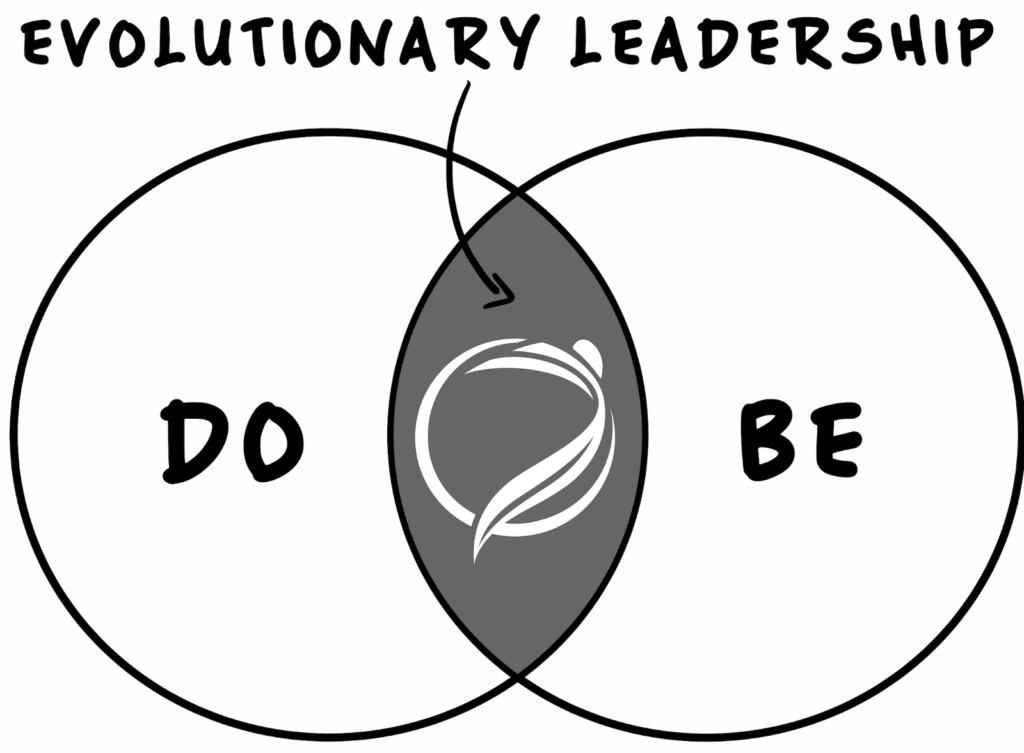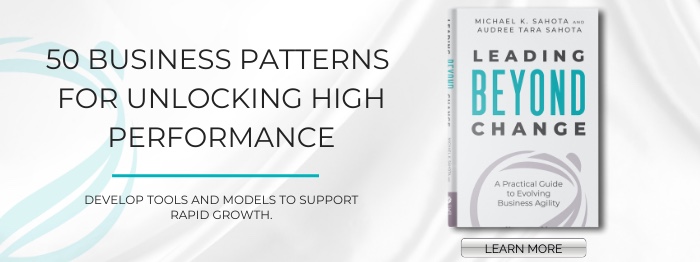Oftentimes when people talk about leadership competencies, they focus on the surface. But it takes more than skills and tactics to be a great leader. In this blog, we’re going to go deep below the surface into what really makes the difference. How to set yourself apart and truly shine as a leader.
What we are speaking about are aspects of what we define as Evolutionary Leadership. It’s the natural evolution of Servant Leadership. Regardless of perspective, we share key leadership competencies that are needed for success.
Leadership Has Two Aspects
Leadership competencies can be divided into two aspects: “being” and “doing.” The first aspect is about the way we show up. The second aspect is about the specific tactics and strategies we use. In order to become a successful leader, it is vital to master them both.

Leadership Competencies: “Being”
As a leader, you impact the work environment through your way of being, how you hold yourself, and even how you’re feeling internally. How you show up is as important as what you do, if not more so. We refer to this as the “Being” aspect of leadership. Here are the four most important leadership competencies related to your way of being.
Self Awareness
The most important leadership competency of all is a high level of self-awareness. We’re all human beings. None of us are perfect. We have emotional reactions and conditioned behavior patterns that are difficult to change. They impact our interactions and how people perceive us.

Self-awareness is about slowing down from the busy pace of life to understand what we’re actually doing. How are we reacting? What’s happening in our bodies and emotional systems? What’s going on with our thoughts? Do we have high levels of clarity, or are we feeling kind of foggy? For now, we’re not talking about changing anything, we’re just talking about becoming aware of our own conditioned behaviors.
What does awareness do? You can’t solve a problem you don’t know you have. We can’t take any corrective action on our leadership or evolve as leaders until such time as we’re actually aware of what we’re doing and how that’s impacting others around us.

People Awareness
The next most important leadership competency is to understand that success comes through people. Related to this is understanding that everything we do impacts the other people around us. This includes:
- Our actions
- Our reactions
- Our emotional state
- How we conduct ourselves
- Whether we’re speaking
- Whether we’re listening
To gain this awareness, follow the old saying, “Step inside someone else’s shoes.” Become aware of the people around you and see how your behaviors and choices impact them.
For example, in a meeting, pay attention to how what you’re saying is landing with people. Is it resonating with them? Are you using up their time when they want to contribute – are you actually blocking their ability to lead at this moment?
We want to be very aware at every moment, are we being part of the problem or the solution? How are we impacting others around us?
Behavior Evolution
Another important leadership competency is the ability to evolve yourself and your behaviors. Based on your life circumstances, you’re going to have some limitations in your leadership. In our work, we call these “leadership edges.”
When you notice you have a behavior that’s causing damage (see “Self Awareness”), having the ability to start evolving and letting go of that conditioned response is essential. That’s what Behavior Evolution is.

If a leader doesn’t have this capability, what does that mean? It means they have a fixed set of behavioral patterns, and they’re not evolving. They’re stagnating, and they’re not able to become a better leader over time.
We’re not just talking about learning new skills or new information. We’re talking about the ability to evolve our behaviors, which are ultimately what creates culture, and what actually builds other leaders around us.
We have a technology called the “Four A’s Leadership Model,” which leaders use to consciously work through their leadership edges. That is one example of a technology to help leaders acquire that capability of self-evolution around behaviors.
Emotional Regulation
Emotional regulation is another vital leadership competency. A lot of people have been lied to about how their emotions work. Most people have an intellectual understanding of emotions, yet our experience is that most of the information out there is actually incorrect, and it traps people. It may give them some sort of small improvement, but it traps them because it doesn’t explain how their emotional system actually functions.
The truth about emotions is that we cannot control them. All we can do as human beings is to be aware of our emotions, and learn to “surf” them, as we call it. You can’t control the waves, but you can learn how to surf them.
We actually wrote a whole book, called Emotional Science, about the technology and techniques to rapidly be in an emotionally clear state. How to show up as a calm, centered, and present leader without going into anger, fear, frustration, and so on – and how to move through those emotions when they do arise.
There are two capabilities leaders need to cultivate for emotional regulation.

The first is the ability to navigate our emotional responses. That happens over time, with practice and the right tools. The second capability is the ability to, over time, develop a more emotionally calm, present, and stable state. This means addressing the root cause of the emotions, and using some sort of growth techniques to address the source of the challenging emotions.
Leadership Competencies: “Doing”
As a leader, what do you actually do? Are you taking actions that demonstrate that you care about people? Are you listening to what’s happening around you? Are you making decisions that are in the best interest of the people in the organizational system? Here are the four most important leadership competencies related to “doing.”
Creating Amazing Meetings
A core leadership competency is the capability to facilitate amazing meetings. That means meetings bring out the best in everyone and create extraordinary outcomes.
Sometimes people will speak about this in terms of facilitation, but it actually goes way beyond that. It’s about understanding how to share power effectively. When to use power to support the meeting moving forward, and when to create a space for others to contribute. And keeping this balance so that people can move towards effective decision-making and create the desired outcomes.

Making Decisions Effectively
We all know how to make decisions on our own. The challenge is how do we share decision making with others and build their leadership capabilities? It’s an understanding of how to make effective decisions together with a group of people, as equals. This is where it’s very helpful to learn the “fist of five” technology, to create clarity around where people are with supporting decisions, as well as our own decision cards technology, to clarify who has decision-making authority.
Being able to understand and use technologies like these allows a leader to know when to hold the power and when to share decision-making authority to help build other leaders around us.
In line with this, you can also use the advice process. This is an important capability so that leaders can model how to include other people in decisions.
Focus on People and Culture over Tactics and Strategy
The next competency of great leadership is to focus on the people and the culture over the tactics and strategy. And what that practically means is that, while as a leader we’ll spend time on tactics and strategy, our first priority is making sure that people are taken care of, since that is the foundation of high performance.

This also means looking at, what are the fundamental challenges with people and culture that are creating the surface-level problems? Instead of trying to fix each problem one at a time as they arise – a kind of “Whack-a-Mole leadership,” – it’s becoming a gardener of the system to support an environment that is nurturing and conducive of great outcomes.
Use Power and Authority Sparingly
The final leadership competency is to use whatever power and authority you have sparingly, and only for the good of the organization. When you put the needs of the organization ahead of personal interests, pet projects, and so on, and consistently demonstrate the responsible use of power, you’ll build good relationships. This happens naturally because you’re aligned with the organizational purpose. You’ll also serve as a role model for the kind of behavior that you want to see from others.
Final Thoughts
The way to inspire people is not by trying to inspire them. The way to inspire people is by being inspiring.
What that means in practice is showing up as your best self every day. When you show up as your best self, open, ready to engage, willing, energized, that will support other people showing up in that same way.
All the steps with the “being,” all the other steps with the “doing,” are all about how you can show up and be inspiring to others. And this is what leadership is all about. The success of your leadership is ultimately determined by those who willingly choose to follow you.
For most leaders, growth is needed to make the shift needed to fully unlock people around you. This is the path of Evolutionary Leaders who are ready to make the changes needed to create the extraordinary.



